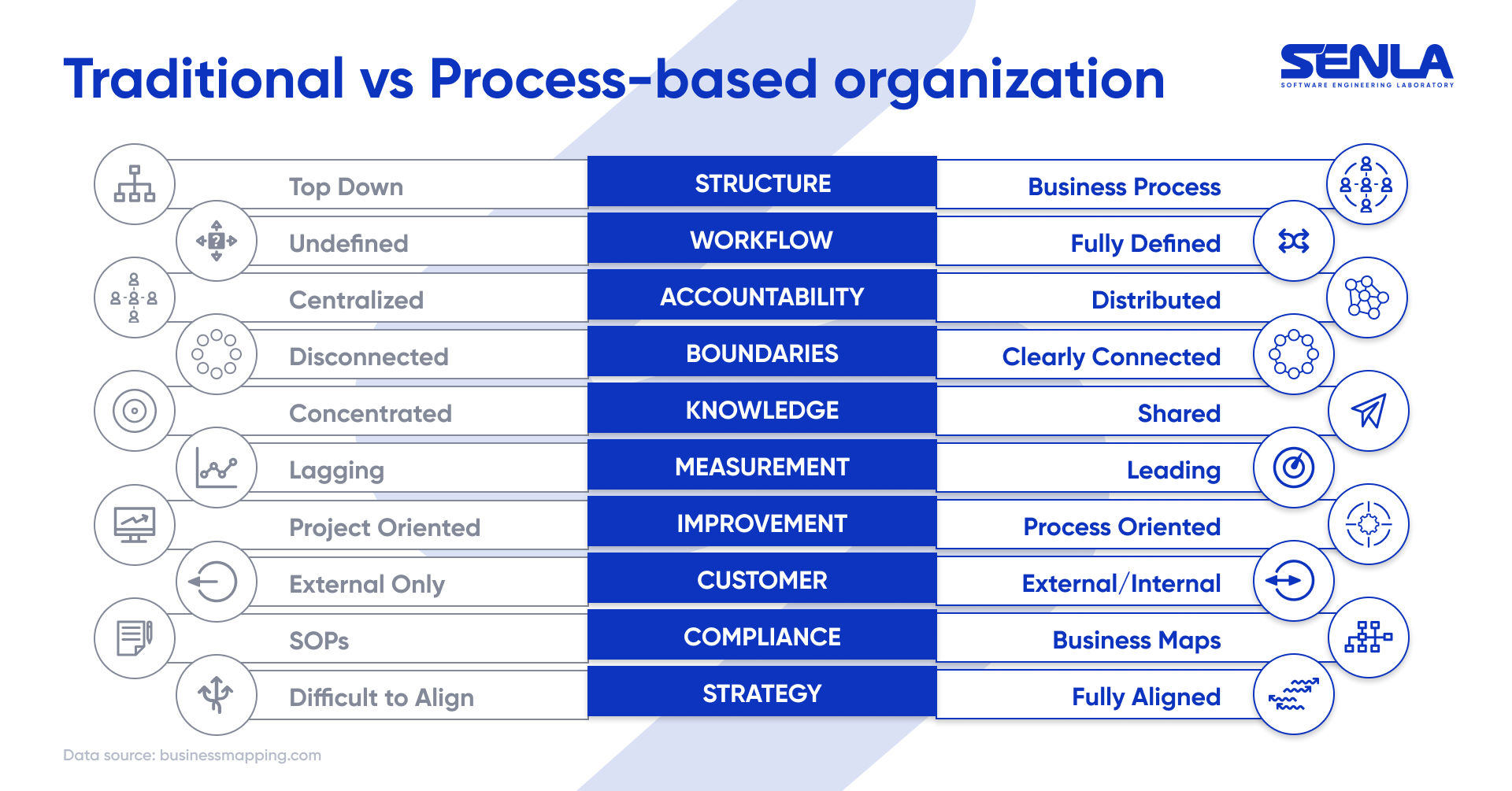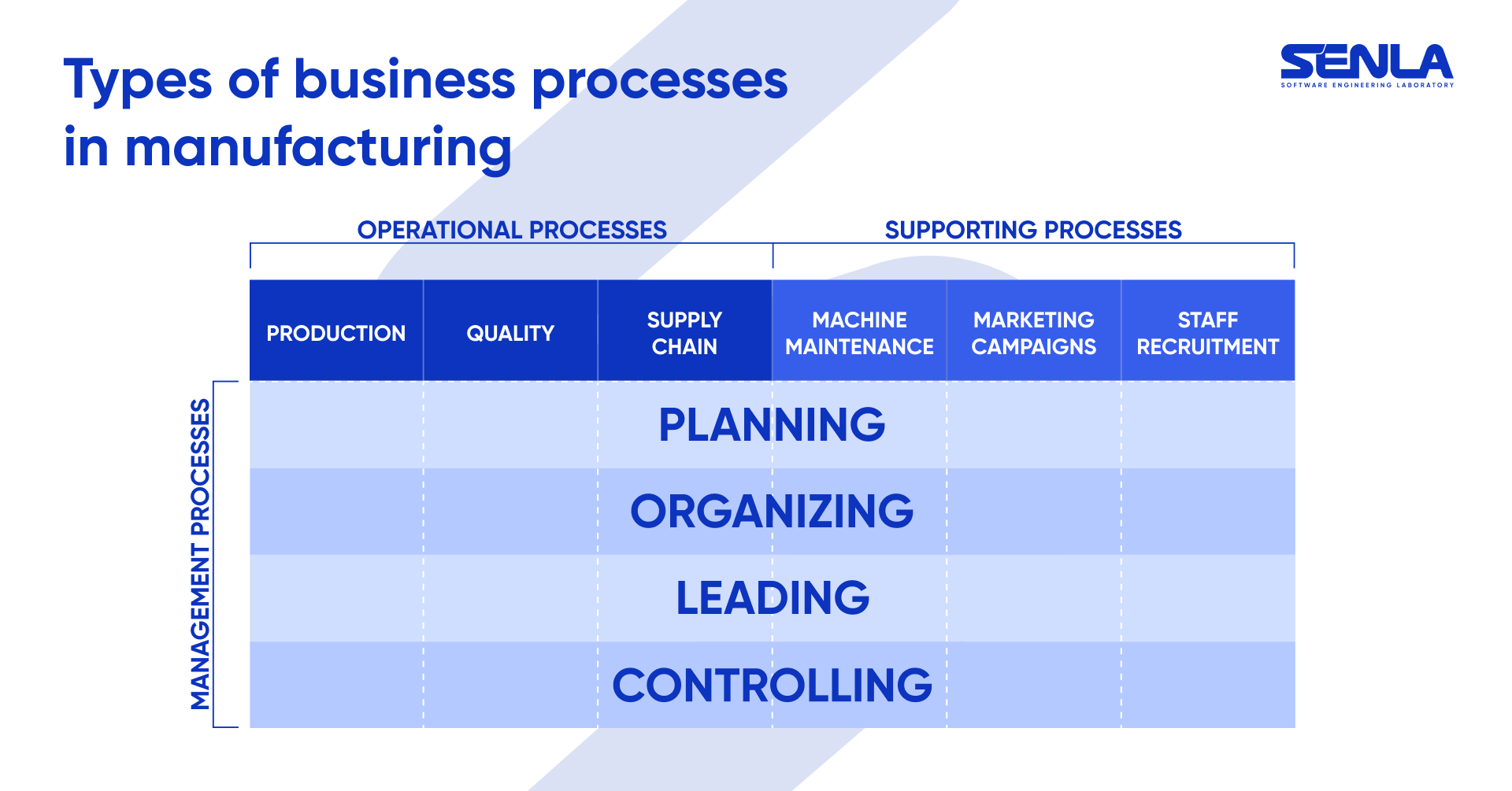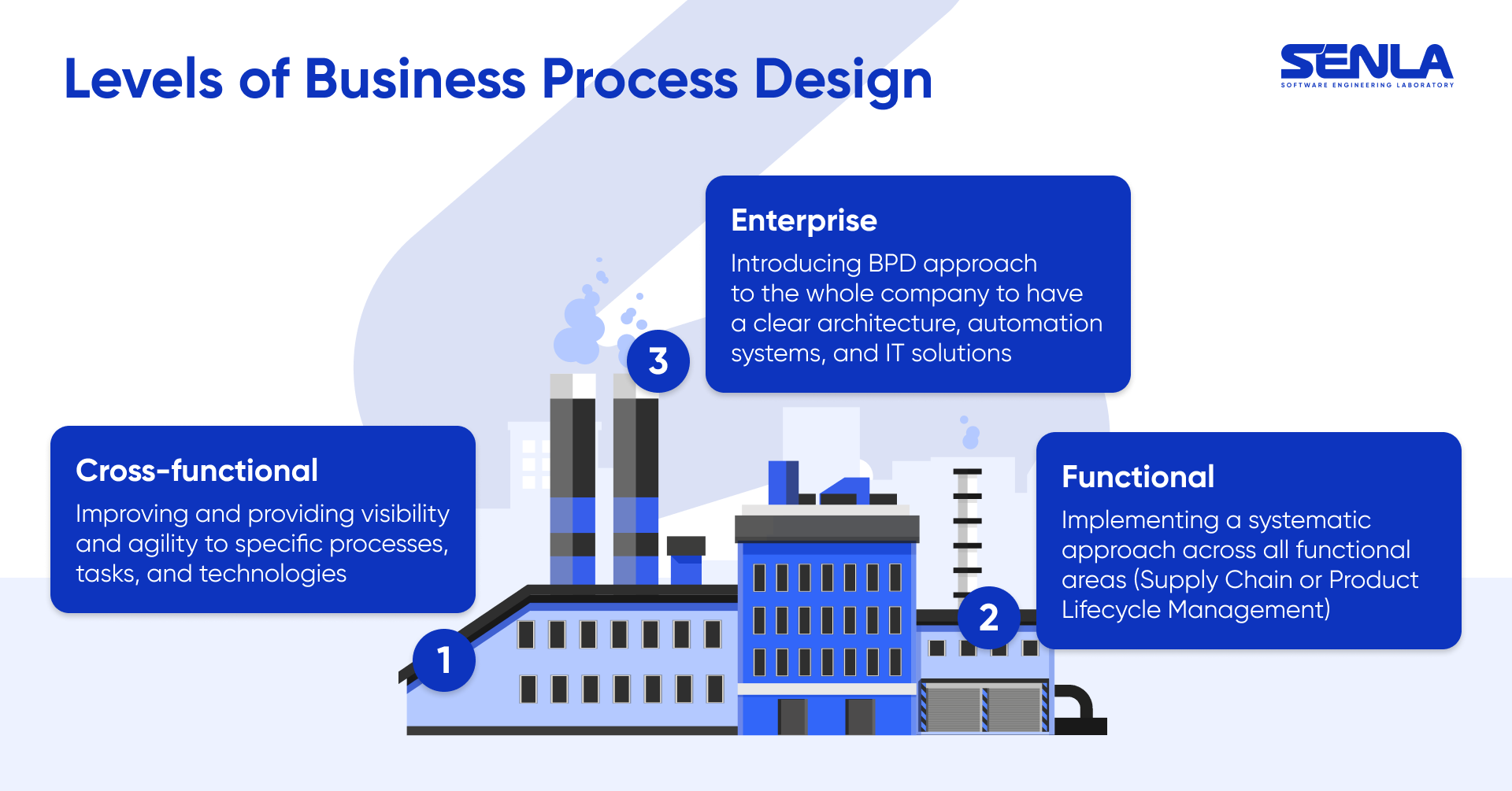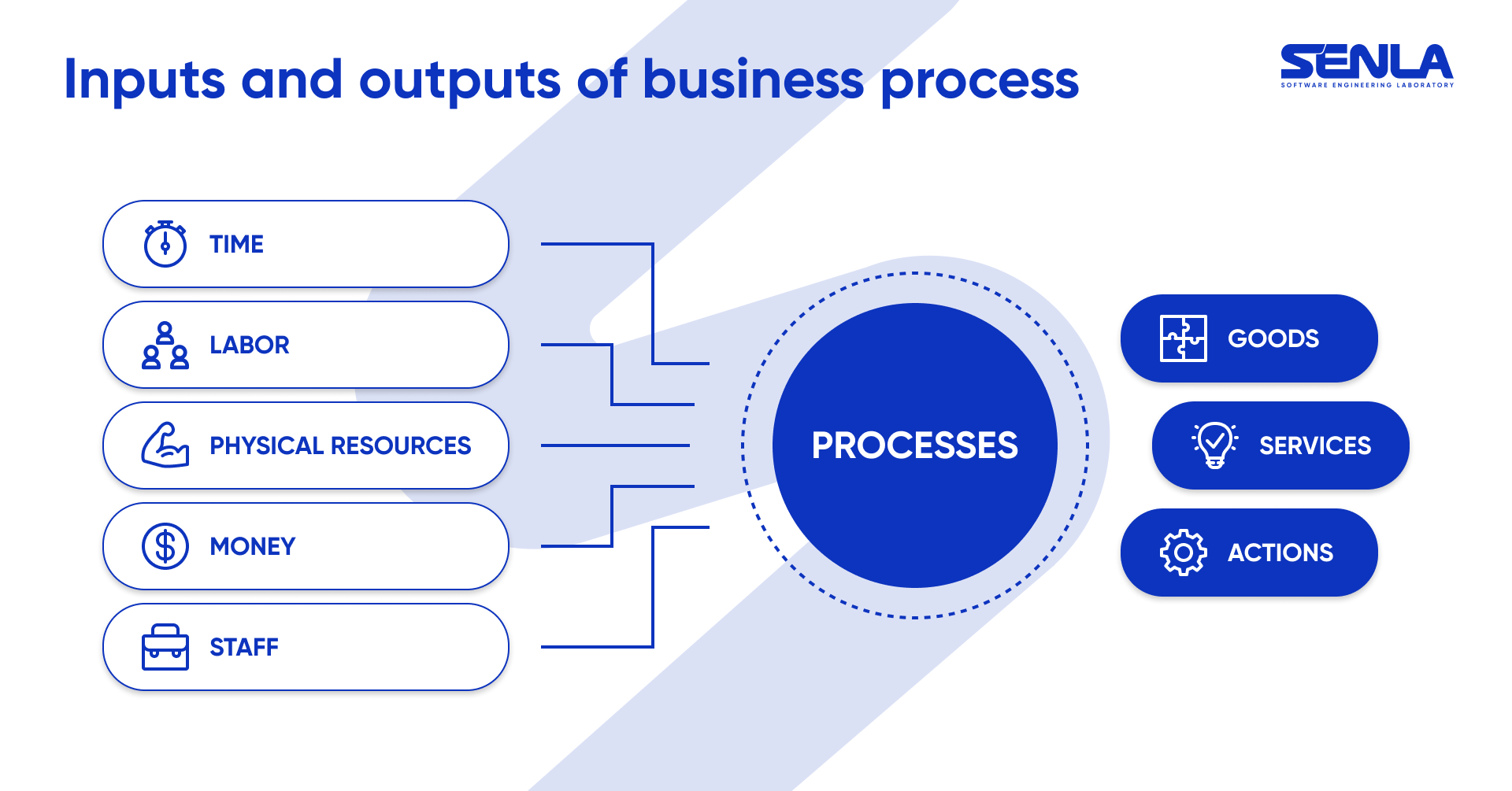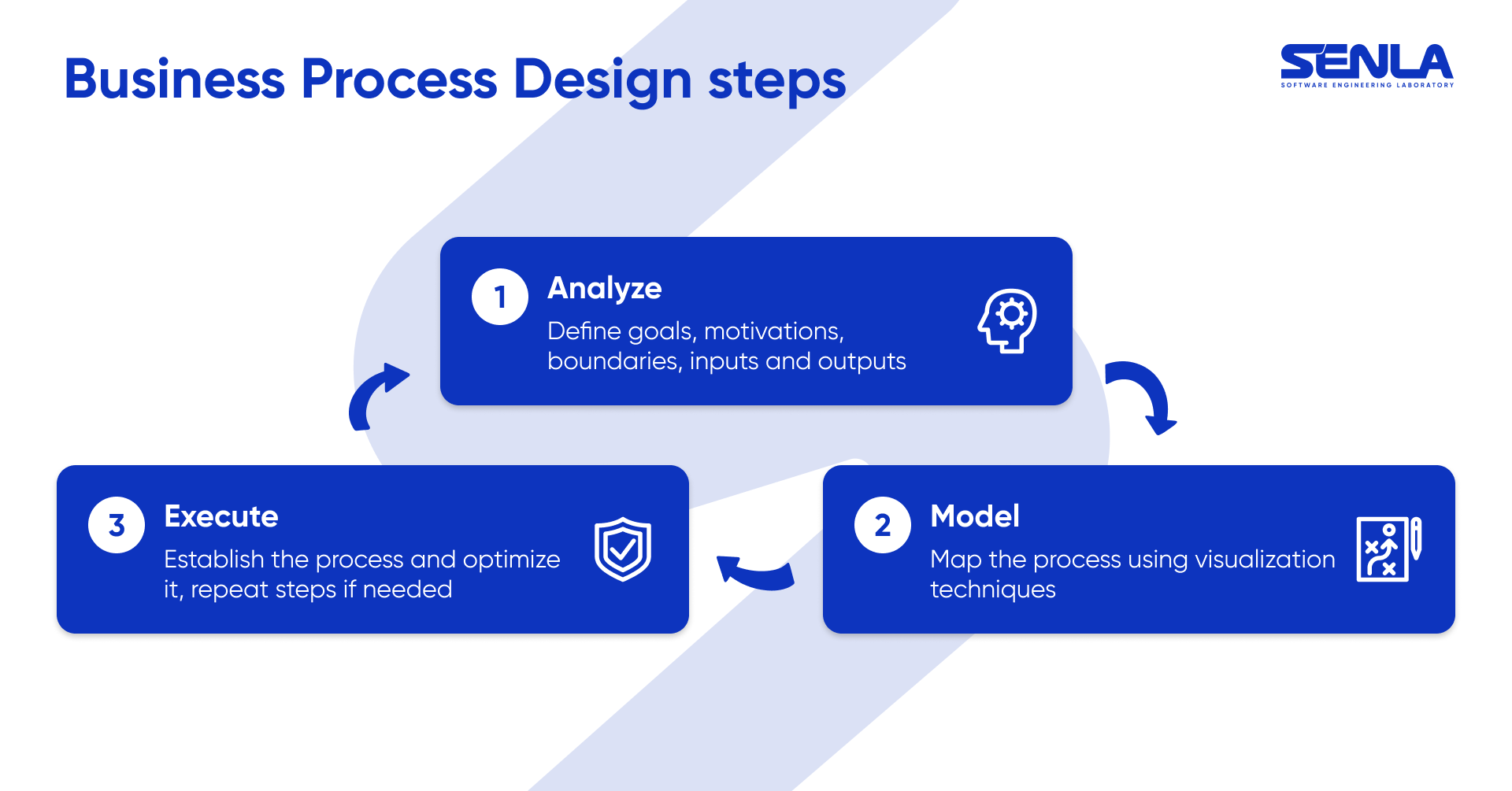Process Design: Overview
Are you currently satisfied with your company's workflows, productivity rates, and overall outcomes?
According to IDC, businesses suffer from ineffective working methods and lose up to 30% of their revenue each year. More recent research conducted by Signavio showed that 70% of the companies were rebuilding existing processes to reduce costs or improve productivity.
Rethinking core business functions can boost performance indicators and optimize operations. Business process design (BPD) is an option.
What exactly is process design? How to apply this concept to a manufacturing company (spoiler alert: you can do it in three steps)? And what results to expect? Read on to find out.
What Is Process Design?
In simple words, process design helps analyze and optimize core business operations to be scalable and easy to automate.
What stands behind this definition?
Let's dive a little deeper and figure it out.
The "analyze and optimize" part means that process design breaks down existing processes into pieces. This simple method helps to understand what works and what doesn't. Sometimes companies neglect the importance of this step, thinking, "if it is not broken, don't fix it." Yet, putting some effort into it can help to avoid working disruptions, incompetence, errors, waste of time, and lack of data in the future. For example, instead of waiting for a machine or expensive equipment to halt, you can perform preventative maintenance. A company is a complex mechanism. So, all the processes should run smoothly at optimal capacity, and employees should know their roles and responsibilities.
Competent analysis and improvement can turn a traditional organization into a process-based one. The difference lies not only within areas like workflows or measurement improvement. It is a total transformation of strategy, accountability, customer relations, and knowledge.
Let's look at the second part of the process design definition about core business operations. These are main repetitive tasks or routine activities that can lead to unpredictable consequences if erred. In the manufacturing sector, application areas are Product Lifecycle Management (PLM), customer relations, and Supply Chain Management (SCM).
Process design is a multifunctional tool. Using BPD techniques, it is possible to improve business processes or create new ones from scratch when launching a new product. In both cases, you can take a DIY approach or turn to the experts in audit and consulting for help. The latter is preferable as an outsource company usually takes all the risks while providing the service.
Over the years the whole process design market has been evolving. More companies use this opportunity to streamline operations, boost productivity, and improve outcomes. According to Statista, the size of the market is expected to double in 2025, compared to 2020.
Process Design Benefits
Implementing process design concept allows companies to:
- identify and eliminate bottlenecks in internal and external activities;
- lay out new workflows and rebuild existing ones;
- reduce costs and time on new employees' training;
- increase business professionalism;
- expand knowledge base;
- encourage team members and other coworkers;
- enhance clients' loyalty.
So, how to put process design into practice in your company? How to get the most out of it?
To start, we will define the three levels of BPD in a manufacturing company.
Levels of Process Design
To build a fully process-based company you have to act gradually from the very beginning, analyzing and improving what is needed. The higher the level, the stronger the changes and overall outcomes. Companies usually start a with a cross-functional level, moving to functional and enterprise one.
1. Cross-functional Business Process Design
This level focuses on improving and providing visibility and agility to specific processes or tasks. These processes can be a part of one or, as the name suggests, several departments. For example, warranty management is under marketing, quality assurance, and technical departments' responsibility. Production staff hiring is also a result of cooperation between HR and technical specialists. Improper communications between them can cause business and competitive edge losses. Thus, cross-functional process design helps to provide all stakeholders with straightforward and non-duplicating instructions.
Both warranty management and recruitment processes are crucial for successful manufacturing functioning. Still, they are different in impacting a company's bottom line. According to standard classification, operational, supporting, and management business processes exist.
Operational or primary processes are key workflows for successful business running. Production, quality control, and supply chain activities generate profits and deliver customer value.
Supporting or secondary processes do not bring money but keep businesses moving. For example, production staff recruitment and machine maintenance help a company prosper.
Management processes underpin operational and supporting workflows. They usually refer to planning, organizing, leading, and controlling. Management processes do not affect the company's bottom line. Yet, ensuring that employees reach their goals and the strategy is working is essential.
Manufacturers face an incredible amount of competition and economic pressures nowadays. At a cross-functional level, companies can address only a moderate part of mentioned challenges. In turn, functional process design applies to more complex and systematic changes.
2. Functional Business Process Design
Companies move to this level of BPD when something does not work within one or several functional areas. As simple as it sounds, it can be rather challenging to establish an issue's existence. For example, a decrease in sales can be a one-time phenomenon or a part of a bigger problem connected with Customer Relationship Management (CRM).
Process design can help manufacturers enhance relations with clients and extend SCM benefits. By remodeling core processes in the PLM area, it will be easy to keep up with the ever-changing demands.
Manufacturers perform process design at cross-functional and sometimes functional levels. Yet, there are many possibilities to move to and execute the third type of BPD.
3. Enterprise Business Process Design
The final goal of enterprise or end-to-end process design is a process-focused company. It means that the company has a clear architecture and thought-out control mechanisms. With various automation systems and IT solutions, manufacturers increase capacity and customer service. After all these transformations, you will be more open to future digital changes. Smart factory initiatives are also becoming in-demand among manufacturers.
While the idea of enterprise process design sounds excellent, few businesses strive to make it real. The problem is a lack of knowledge, experience, time, and fear to change the whole system. These are challenges that you have to overcome to beat the competition.
So far, we have discussed what process design is and the primary levels of transformation within a manufacturing company. Whatever changes you now wish to adjust, you can rely on this three-step instruction.
Three Steps of Process Design
1. Analyze the process
At this step, try to analyze everything that defines the process you want to create or redesign. The information about goals, motivations, boundaries and issues can help you understand the rights and wrongs and identify areas for improvement. The first step is crucial and probably the trickiest, as it is easy to miss the details.
You will also want to identify your inputs and outputs while starting process design. Inputs are vital resources and materials such as time, labor, equipment, and staff that allow your company to function. Outputs can be described as goods, services, or actions directly linked to the goals and results.
Remember that new or redesigned processes should provide extra benefits to a company. Whether it is a simple task like developing a new onboarding system or a more complex one, analyze the value.
Finally, it can be helpful to collect feedback from employees, clients, and other stakeholders.
After highlighting all the pain points and bottlenecks, it is time to model the process.
2. Model the process
Based on the collected triggers and specifications, a company can map the process. The main idea is to divide a process into many tasks and place them correctly. Each task has to be paired with assigned roles and responsibilities. Sometimes, it is appropriate to establish positions for the outsourced team.
A company can use visualization techniques to give everyone a clear understanding of how the process will work and where it will start and end. Methods like flowcharts, programs, or scripts help to illustrate processes of varying complexity. You can perform mapping manually or using specialized BPM software; it's up to you.
Now it's time to take a test run on the third step of process design, which is execution and optimization.
3. Execute and optimize the process
In the beginning, built processes can be executed in-house and then in the case of success in the real world. The primary advice here is to try different ways to test your system and have an open mind about the results.
Remember that business process design is not something solid once established. Instead, it is a never-ending procedure of optimizing and improving all the workflows. So if you are not satisfied with the first results, you can go back to step one or two and repeat the process. In the end, you will be more confident and realistic about your company's perspectives.
As we mentioned earlier, it can also be helpful to outsource process design implementation to experienced companies. More than 85% of companies request consulting services in the different roles of the BPD Life Cycle. We recommend clarifying this question in the early stages of process design to avoid wasting valuable resources and time.
Take Action in Process Design
Let's imagine that all the processes you planned to design work smoothly. Should you stop optimizing and improving?
If you want to challenge the competition and expand your markets, you will have to take the processes to another level. Our company is proud of developing software, automated systems, and other web products for reaching these goals. Contact our experts if you want to know more about how process design can benefit your business. You will be surprised by new perspectives and horizons.


